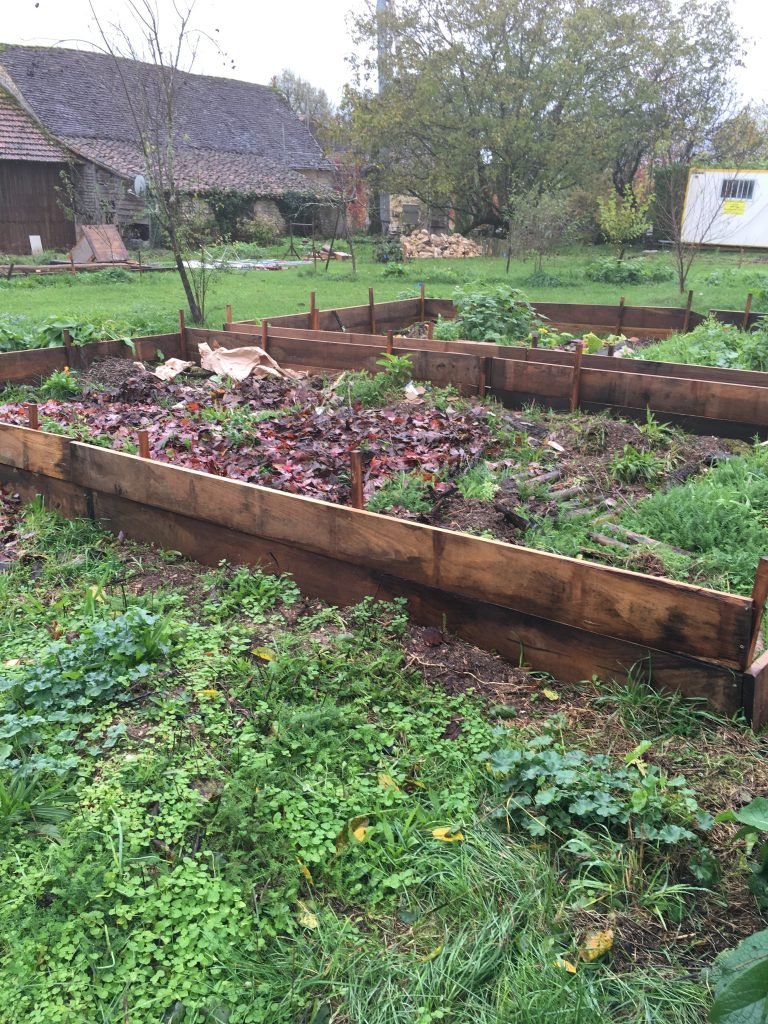The beginning of the adventure...
A lot talks about permaculture, today it is a recent and very fashionable fashion, but few know how to define it.
Many articles talk about global methods, a philosophical approach, and the bus, is to take care of nature.
This is an intro to not say much.
The main principles where I only see advantages
We often talk about culture on the hill:
From the start, I chose to install frames made with formwork boards to allow a long-lasting, aesthetic and easy-to-maintain demarcation.
On the grassy ground, to begin with, a layer of gray cardboard stripped of all tape and plastic materials covers the framed spaces. On top, rotting logs of wood, collected in the forest, are spread out, then I pile up successive layers of organic nitrogenous waste (cutting grass for example) and carbonaceous waste (household plant waste, crushed dry wood, straw, boxes). This technique is called lasagna culture.
The need for quantity of plant matter solved my problem of reusing my stock of compost accumulated by pruning, weeding of flowerbeds and kitchen waste, recyclable paper and cardboard.
No bare ground. Permaculture encourages never leaving the earth bare:
Still to finish filling the frames, I spread organic mulch, surface composting. It limits the evaporation of water and keeps the soil fresh, which allows savings in watering, thus avoiding erosion and leaching of soil by rainwater runoff. Furthermore, it slows down the development of weeds and weeds.
A vegetable garden for lazy people:
I do not dig or trample the beds of cultivated soil.
The most restrictive is working the land. However, plowing, turning the soil, disrupts the layers which each have their particularities and shelter living beings such as mushrooms, insects, earthworms, mites, and other micro-organisms transform organic waste into humus and allow exchanges gaseous. That’s so much less work.




